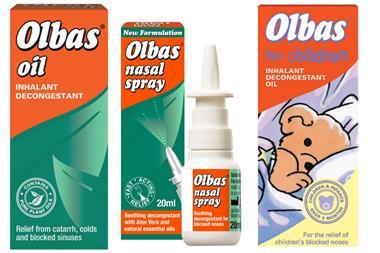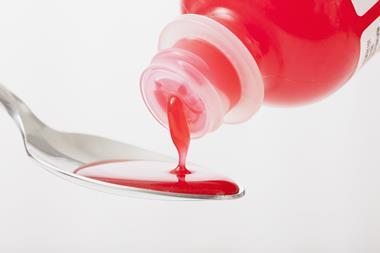Shoppers are under pressure to get more for their hard-earned money, and manufacturers have obliged with new and improved products
Cleaning, softening and freshening are the three things consumers associate with washing their clothes. And as people are generally buying fewer clothes they are keen to take greater care of the ones they have.
The laundry detergents/fabric conditioners market in the UK is massive - in 2011 it was worth more than £1.3bn (SIG data). We’re a houseproud nation, too, it seems, and household category shoppers are particularly good news for c-stores. Paul Lettice, head of trade communications at Procter & Gamble, says that CTP data shows the average household category shopper visits their local convenience store four times a week and spends £9.03 per trip. The average c-store shopper spends only £5.31 per trip and visits 3.3 times per week. All of which makes household cleaning and laundry products items c-stores can’t ignore.
According to Tom Hazelden, Partners for Growth controller and convenience manager at Unilever, one-third of the population buy laundry goods in the convenience sector every two months.
Various data sources (HIM, IGD, IRI and TNS) show that these c-store laundry shoppers fall into three main groups: retired stay-at-home mothers and professionals.
“Your range therefore needs to be appropriate for these core shopper groups and demographics. Laundry is part of a regular top-up habitual purchase - not a distress purchase - and because of this, if a chosen product is not available the customer will delay purchase or go elsewhere. You also need to remember that many customers walk to your store so concentrated formats are more attractive as they are lighter to carry,” Hazelden says.
According to Mintel, consumers are looking for the best-performing products for cleaning their clothes, which the research company says will ensure strong demand for any new and improved products on the market. “Even if the incomes squeeze is causing consumers to cut back in other areas, they are unlikely to compromise on caring for their laundry,” says the latest Mintel laundry report (June 2011).
It adds: “Well-known brands are by far the most popular choice, with the proportion of consumers usually buying brands such as Persil or Lenor outnumbering those usually buying own-label products by a considerable margin.
“Making use of special offers to stock up is a common feature of shopping behaviour, with buying the cheapest product on the shelf much less common.”
P&G’s Lettice agrees and adds: “Shoppers look to brands they know and trust for reliability and longevity and that provide true value for money.”
Unilever’s Tom Hazelden believes shoppers have been attracted by strong promotions in the major multiples. “This has inevitably had an impact on the convenience sector. Pricemarked packs of the best-selling laundry brands offer convenience retailers an opportunity to reassure their customers that they are still getting great value as well as the convenience of shopping locally.”
P&G says pricemarked packs are a key priority for its convenience accounts, as they deliver favourable price points for the consumer and advantageous margins.
But as well as offering value for money, both P&G and Unilever are keen to ensure that their products reduce their impact on the environment. For Unilever this has meant the reduction of pack sizes and the introduction of concentrated liquids across Persil, Surf and Comfort. Last year saw the relaunch of Persil Small & Mighty, which now offers “outstanding cleaning even in 30 minutes”, and the launch of Persil 2in1 with Comfort.
Persil Small & Mighty was relaunched to target the 21% of wash loads that are done on shorter or quick-wash cycles. The new formulation includes five new ingredients, specially designed to achieve results and reduce wash times and temperatures.
Persil 2in1 with Comfort combines the cleaning performance of Persil with the fragrance of Comfort. Kelly Scorah, Persil brand manager at Unilever UK, says: “Sensorial laundry products which offer both softness and fragrance are the fastest-growing sector within the laundry market. Bringing our two leading brands together to create Persil 2in1 with Comfort will drive value and growth into the laundry category.”
At P&G the focus is on the Future Friendly partnership, which sees Ariel, Lenor and Fairy using 15% less energy, water and packaging.
P&G’s Lettice comments: “While green factors may not be the first priority in the current economic situation, when making a brand versus brand decision one of the elements that consumers are more frequently considering after evaluating performance factors is sustainability. They look to the brands they know to help provide them with recycling and energy-saving solutions.
“The energy needed to heat water in washing machines accounts for more than 70% of the end-to-end environmental footprint of any laundry product. So that’s where we needed to innovate - how to clean brilliantly while dialling down the need for hot water (and thus energy).”
They came up with Ariel Excel Gel, a highly concentrated detergent designed to clean brilliantly even at 15ºC. Lettice says that as well as packaging, transport and waste improvements associated with the new concentrated format, consumers using Ariel Excel Gel save money and energy on top of getting a better performing product.
He adds: “Our cold washing campaign dates back to 2006 when we launched the Ariel ‘Turn to 30’ programme. More than a quarter of UK households now wash regularly at 30°C or less - up from just 2% before we started.”
House call
Nielsen data shows that the most important factors influencing choice of cleaning products are performance (44%), promotions (33%), low prices (32%) and brand (25%).
Laurence Smith, commercial director at EnviroProducts, confirms that as with laundry products, consumers buying household cleaning lines are reluctant to sacrifice performance for cheaper prices. “With the economic downturn continuing, shopping smartly to find products that are value for money and are convenient will be key. There will be a continuing trend for consumers looking to buy products that can save money as well as time, such as the No More Chemicals brand.
“Consumers want practicality, performance and cleaning power from their household cleaners, and products with clearly recognisable benefits will be the top performers.”
Smith adds that one benefit that is of growing importance is the demand for products that do not trigger allergies and asthma. Products that cater for allergy-prone people are becoming more important in the same way that skin-friendly laundry products serve a specific niche.
No More Chemicals is an environmentally-friendly Allergy UK-endorsed cloth and mop range. It includes a stainless steel cloth, kitchen surfaces cloth, bathroom cloth and window cloth. All are anti-bacterial and guaranteed for up to 100 machine washes.
Also available is the No More Chemicals floor mop, designed to clean using nothing but water. The mop comes with a detachable head that can be washed, or replaced with a refill.
The latest addition to the range is the LCD TV screen cleaning kit, which safely cleans LED, LCD, plasma and computer screens. The cloths have an rrp of £2.29 while the mop retails at £10.99.
“To help maximise sales, we recommend focusing on a range of general purpose products and a select number of specialist products that sell well - in particular products for the kitchen, bathroom and for stubborn areas such as stainless steel,” says Smith.
Meanwhile, OzKleen chief executive officer Mark Quinn reports that his company’s three core brands - Carpet Power, Kitchen Power and Bath Power - have seen strong growth in the past two years. “The products are flying - our customers are extremely loyal. Once they start to use OzKleen products they don’t go back to other products,” he says.
Finally, many cleaning jobs can’t be done without kitchen roll. Kantar Worldpanel data says the household towel market is worth £341m, showing 3.2% value growth, largely driven by consumers switching from standard rolls to jumbo rolls at a higher price point.
Late last year SCA launched Plenty The Big One, which has sheets that are almost 50% larger compared with standard Plenty.
Plenty brand marketing controller Joanne Mathers says retailers should ensure that they offer the number-one branded SKU in the market, Plenty white two-roll, with a fat roll, and Plenty The Big One alternative to reflect market trends and offer choice.
“Aside from deciding on quality, pack size is the most important decision at point of purchase, therefore it is important to stock a bigger pack size which will drive usage and encourage trip spend. Due to space restrictions in c-stores, Plenty Fat Rolls and Plenty The Big One are a way to appeal to the bigger pack shoppers.”■
































No comments yet